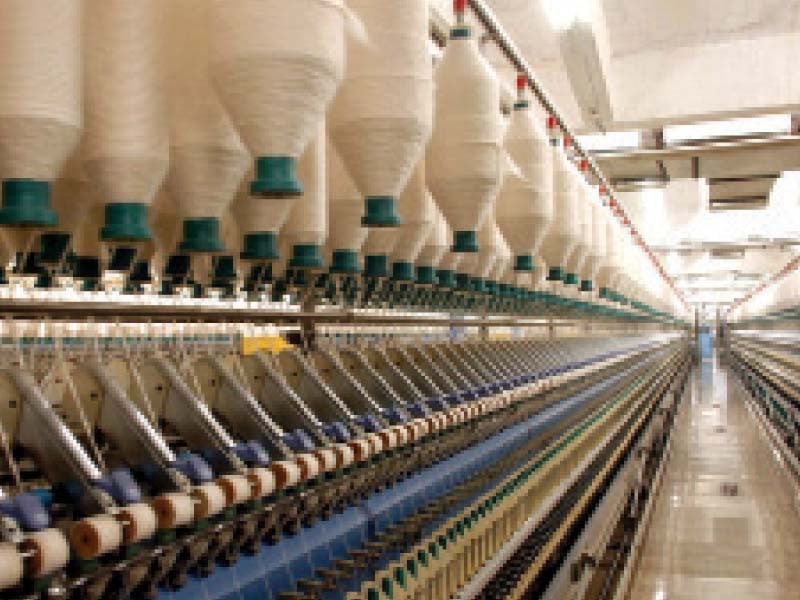ghazi52
PDF THINK TANK: ANALYST

- Joined
- Mar 21, 2007
- Messages
- 101,785
- Reaction score
- 106
- Country
- Location
.,.,.,.
Shahram Haq
August 03, 2023
LAHORE: Pakistan’s textile sector, once a powerhouse of export revenues, continues its dismal performance, facing a 15% month-on-month decline in the first month of the new fiscal year 2023-24. The All-Pakistan Textile Mills Association (APTMA) released provisional data on Wednesday, revealing that textile exports for July 2023 stood at $1.31 billion, compared to $1.54 billion for the same month the previous year.
This marks the tenth consecutive month of decline for the country’s largest export revenue-generating sector. In the first seven months of this calendar year, textile exports recorded a meagre $9.09 billion, a significant drop from $11.48 billion in the same period of the previous calendar year, resulting in a disheartening 21% negative growth.
The slump extends beyond textiles, as the overall country’s exports also dipped by 12.68% on a month-on-month basis. July 2023 exports reached $2.057 billion, down from $2.356 billion in June 2023. Moreover, on a year-on-year basis, July 2023 exports declined from $2.250 billion in July 2022 to $2.057 billion, reflecting an alarming decrease of 8.57%.
Experts predict that the textile sector’s woes are far from over. After experiencing a massive 9.84% negative growth in the last fiscal year, it is feared that the trend will persist for at least the next five months.
“It would be a miracle if textile exports turned positive next year,” remarked Ijaz Khokhar, the Chief of Pakistan Readymade Garments Manufacturers and Exporters Association. Stakeholders emphasise the urgent need for policymakers and concerned ministries to address the critical situation in this crucial sector. They fear that without intervention, the country may suffer a staggering $2 billion loss in textile exports this fiscal year.
The stakeholders expressed concern over the lack of interest shown by the Ministry of Commerce and the Trade Development Authority of Pakistan in formulating any policy or strategy to address this negative growth. “We have a textile policy in Pakistan, but sadly no institution is interested in materialising it. This is the prime reason why our textile exports are turning negative, and they are likely to remain so in the coming months,” said a concerned textile exporter.
Despite the establishment of a Special Investment Facilitation Council, the textile sector has been surprisingly excluded. While the initiative identifies key sectors to revitalise the economy, its impact might be delayed for years, leaving the textile industry grappling with continued losses.

 tribune.com.pk
tribune.com.pk
Textile exports plunge 15%
Marks tenth consecutive month of declineShahram Haq
August 03, 2023
LAHORE: Pakistan’s textile sector, once a powerhouse of export revenues, continues its dismal performance, facing a 15% month-on-month decline in the first month of the new fiscal year 2023-24. The All-Pakistan Textile Mills Association (APTMA) released provisional data on Wednesday, revealing that textile exports for July 2023 stood at $1.31 billion, compared to $1.54 billion for the same month the previous year.
This marks the tenth consecutive month of decline for the country’s largest export revenue-generating sector. In the first seven months of this calendar year, textile exports recorded a meagre $9.09 billion, a significant drop from $11.48 billion in the same period of the previous calendar year, resulting in a disheartening 21% negative growth.
The slump extends beyond textiles, as the overall country’s exports also dipped by 12.68% on a month-on-month basis. July 2023 exports reached $2.057 billion, down from $2.356 billion in June 2023. Moreover, on a year-on-year basis, July 2023 exports declined from $2.250 billion in July 2022 to $2.057 billion, reflecting an alarming decrease of 8.57%.
Experts predict that the textile sector’s woes are far from over. After experiencing a massive 9.84% negative growth in the last fiscal year, it is feared that the trend will persist for at least the next five months.
“It would be a miracle if textile exports turned positive next year,” remarked Ijaz Khokhar, the Chief of Pakistan Readymade Garments Manufacturers and Exporters Association. Stakeholders emphasise the urgent need for policymakers and concerned ministries to address the critical situation in this crucial sector. They fear that without intervention, the country may suffer a staggering $2 billion loss in textile exports this fiscal year.
The stakeholders expressed concern over the lack of interest shown by the Ministry of Commerce and the Trade Development Authority of Pakistan in formulating any policy or strategy to address this negative growth. “We have a textile policy in Pakistan, but sadly no institution is interested in materialising it. This is the prime reason why our textile exports are turning negative, and they are likely to remain so in the coming months,” said a concerned textile exporter.
Despite the establishment of a Special Investment Facilitation Council, the textile sector has been surprisingly excluded. While the initiative identifies key sectors to revitalise the economy, its impact might be delayed for years, leaving the textile industry grappling with continued losses.

Textile exports plunge 15% | The Express Tribune
Marks tenth consecutive month of decline






